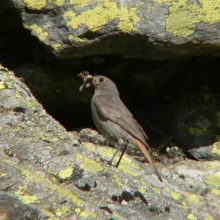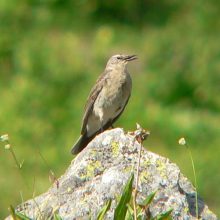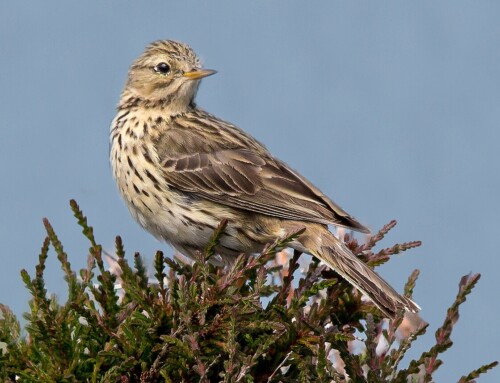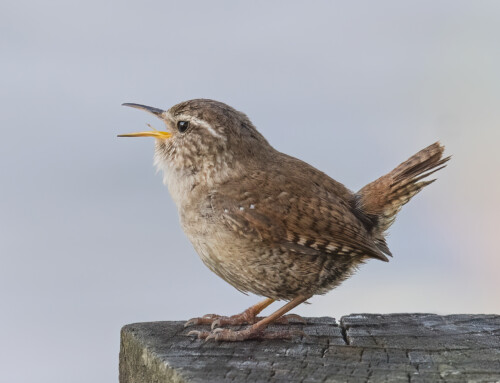Do bird communities recover when alpine ski pistes are restored?
LINKED PAPER
Ski-piste revegetation promotes partial bird community recovery in the European Alps. Caprio, E., Chamberlain, D. & Rolando, A. 2016. Bird Study. DOI: 10.1080/00063657.2016.1216520 VIEW
In the Alps, the skiing industry has a major impact on the natural environment because of the large scale changes that it causes. Many of us frequent ski-pistes during winter and it can be difficult to imagine the impact that they have when all the landscape is covered by snow. Major impacts of ski-pistes, in fact, occur on vegetation and soils, since the natural vegetation and most of the upper soil horizons are removed during the construction process (machine grading, used to smooth out underlying rock and soil) to provide suitable slopes for skiers and to enhance the use of artificial snow.
Several studies have shown negative effects of ski-pistes on many animal taxa, i.e. birds (Rolando et al. 2007), small mammals (Hadley & Wilson 2004; Sanecki et al 2006; Negro et al. 2009), reptiles (Sato et al. 2014) and invertebrates (Negro et al. 2013, Rolando et al. 2013, Kašák et al. 2013). Although ski-pistes probably do not significantly cause habitat fragmentation above the treeline, landscape changes are still detected and affect bird species richness and distribution (Caprio et al. 2011). Moreover, the amount of grass cover controls abundance and diversity of ground dwelling arthropods that, in turn, may directly affect birds feeding on invertebrates (Rolando et al. 2007).
In this study, we tested the hypothesis that re-vegetation of grassland ski-pistes promotes bird community recovery. The study was carried out within the Limone and Limonetto skiing districts in the Vermenagna Valley (south western Italian Alps) (44° 11’N 7° 33’E), partly encompassed within a protected area (Site of Community Interest IT1160056 “Alpi Marittime”). We considered ski-pistes built across pastures ranging from about 1500 to 2200 m a.s.l. at two ski resorts in the Maritime Alps (the southernmost part of the Alps). Here, due to the low altitude of several ski-pistes and the influence of the maritime climate, old ski-pistes have been recolonized by vegetation and are now grass-covered. Other, more recent, ski-pistes have not recovered and appear as strips of bare ground with scarce vegetation.
We compared the whole bird community, and specialist and generalist guilds, in plots located in ski-pistes of recent construction with depleted or no vegetation (hereafter non-restored ski-pistes), old ski-pistes that were entirely grass-covered, showing a rather natural appearance (hereafter restored ski-pistes), and natural grasslands away from ski-pistes. We also investigated bird–habitat relationships, to identify structural components of the habitat (e.g. grass cover, shrub cover, height of vegetation etc.) that control composition and abundance of grassland bird communities.
I monitored all the ski-pistes of the study area (a total of 53 kilometers) that occurred in open habitat only, i.e. away from the forest where tracks cross open pastures, from about 1500 to 2200 m a.s.l. Restored ski-pistes were 3-10 years old and are still in use, but showed in most cases a natural appearance, with a rather high grass cover.
I carried out the field work in June and July 2011, sampling birds in circular plots of 50 m radius. Counts lasted 15 min, during the first 10 minutes of which the observer stood still and quiet at the centre of the plot, as in standard point counts. In the last 5 minutes of the count, the observer moved around, to flush secretive and non-singing individuals. Each census plot was visited twice (in June and July). Three types of plots were defined: 14 plots were centered on non-restored ski-pistes, 17 on restored ski-pistes and 18 in natural grassland habitats. Plots were described also in terms of habitat cover and structure.


We detected 32 species, of which 24 were grassland or ecotone species and eight were shrub or woodland species. Whinchat Saxicola rubetra, Water Pipit Anthus spinoletta, Black Redstart Phoenicurus ochruros and Linnet Carduelis cannabina were the most common species.

Non-restored ski-pistes showed a difference in habitat cover and structure. For example they had a lower percentage of grass cover and average vertical structure and a higher bare soil cover than natural grassland and restored ski-pistes. Restored ski-pistes and natural grassland were similar, with no significant difference in habitat components.
Species richness and abundance of birds were in fact significantly higher on restored than on non-restored ski-pistes, independently of the species considered and the analyses carried out. Nevertheless, bird community parameters (especially those of grassland species) of restored ski-pistes were still lower than those of natural grassland, even though the presence of shrubs (i.e. rhododendrons) in grasslands tended to lower bird diversity.
This suggests that restoration of ski-pistes may partially promote the recovery of local bird communities, but an apparently successful restoration of ski-pistes may not be enough to promote a complete recovery of bird communities. These results are likely driven by the vegetation of the restored ski-pistes.
Our results suggest that an apparently successful restoration of ski-pistes may not be enough to promote a complete recovery of bird communities. The complete recovery of local bird communities may be promoted only if an integral recovery of the original vegetal communities is achieved (but we still need to fully understand the role played by artificial snow).
I want to stress that successful restoration of ski-pistes will not solve eventual problems connected with snow cover management. Snow cover of ski-pistes, in fact, is very different from that of natural grassland because of the use of artificial snow produced by snow-making facilities and/or the snow compression simply caused by skiers and heavy machinery. In both cases, the main effect is that of postponing the time of melt-out, hence affecting the vegetation cycle and possibly arthropod abundance. To preserve and restore bird community we believe that the best conservation option is to adopt techniques to maintain as far as possible original grassland.
Finally I want to stress the need to improve research to better understand underlying mechanisms, including fine-scale studies of the relationship between birds, vegetation, snow cover and invertebrate availability. Species like Alpine Chough Pyrrhocorax graculus, Red-billed Chough Pyrrhocorax pyrrhocorax and Snowfinch Montifringilla nivalis are dependent on invertebrates during the spring and summer, whose availability is likely to be affected by vegetation structure and snow cover. The effect of snow melt (including artificial snow) on plant and invertebrate phenology, both on and off pistes, and consequently feeding ecology of high altitude grassland birds, should be a priority research topic in this field.
References
Caprio, E., Chamberlain, D.E., Isaia, M. & Rolando, A. 2011. Landscape changes caused by high altitude ski-pistes affect bird species richness and distribution in the Alps. Biol. Conserv. 144: 2958–2967. doi: 10.1016/j.biocon.2011.08.021 VIEW
Hadley, G.L. & Wilson, K.R. 2004. Patterns of Small Mammal Density and Survival Following Ski-Run Development. J. Mammal. 85:97–104. VIEW
Kašák, J., Mazalová, M., Šipoš, J. & Kuras, T. 2013. The effect of alpine ski-slopes on epigeic beetles: does even a nature-friendly management make a change? J. Insect. Conserv. 17:975–988. doi: 10.1007/s10841-013-9579-3. VIEW
Negro, M., Rolando, A., Barni, E., et al. 2013. Differential responses of ground dwelling arthropods to ski-piste restoration by hydroseeding. Biodivers. Conserv. 22: 2607–2634. doi: 10.1007/s10531-013-0544-y. VIEW
Negro, M., Isaia, M., Palestrini, C. & Rolando, A. 2009 The impact of forest ski-pistes on diversity of ground-dwelling arthropods and small mammals in the Alps. Biodivers. Conserv. 18: 2799–2821. doi: 10.1007/s10531-009-9608-4. VIEW
Rolando, A., Caprio, E., Rinaldi, E. & Ellena, I. 2007. The impact of high-altitude ski-runs on alpine grassland bird communities. J. Appl. Ecol. 44: 210–219. doi: 10.1111/j.1365-2664.2006.01253.x. VIEW
Rolando, A., Negro, M., D’Entrèves, P.P., et al. 2013. The effect of forest ski-pistes on butterfly assemblages in the Alps. Insect Conserv. Divers. 6: 212–222. doi: 10.1111/j.1752-4598.2012.00204.x. VIEW
Sanecki, G.M., Cowling, A., Green, K., et al. 2006. Winter distribution of small mammals in relation to snow cover in the subalpine zone, Australia. J. Zool. (London) 269: 99–110. doi: 10.1111/j.1469-7998.2006.00074.x. VIEW
Sato, C.F., Wood, J.T., Schroder, M., et al. 2014. An experiment to test key hypotheses of the drivers of reptile distribution in subalpine ski resorts. J. Appl. Ecol. 51: 13–22. doi: 10.1111/1365-2664.12168. VIEW
Free ebook “The Impacts of Skiing and Related Winter Recreational Activities on Mountain Environments”. VIEW
Image credit
Featured image: Water pipit Anthus spinoletta © Enrico Caprio
If you want to write about your research in #theBOUblog, then please see here.





